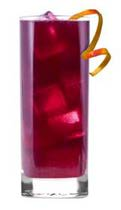Hard liquor tastes like trouble. That’s why Sadie* drinks wine—soft, velvety white wine, preferably Riesling. The 34-year-old pharmacist loves the flavor, yes, and everything that comes with it: the gratifying snap of the cork, the beads of sweat on a cold glass, the buzz that still takes her by surprise.
Three nights a week, often after a particularly punishing day at work, Sadie will open a bottle with the intention of drinking no more than half. (Her husband only likes vodka, unfortunately—or is that fortunately?—so there’s no sharing of the spoils.) Somewhere around the third pour, those intentions wash away. “When there’s about a quarter of it left I think, Oh, let’s just put this bottle out of its misery,” she says.
Killing a bottle on your own may seem excessive…or not. Fact is, Americans are drinking more wine than ever before. In 2010, for the first time, our consumption surpassed that of the French. Let’s try that again: the French! And the majority of imbibers are women. To put it more precisely, women drink nearly 60 percent of all wine in the U.S., a share that’s been steadily growing over the last decade, according to the Beverage Information Group.
“Wine is the last great permissible escape,” says Adam Hanft, a brand strategist for Hanft Projects, a consulting firm. “It’s so ubiquitous in pop culture that there’s virtually no stigma to it anymore.”
There’s no question that women use wine as a stress reliever and an icebreaker. But unlike beer and spirits, wine enjoys a more nuanced profile: It’s celebrated as a sophisticated meal enhancer, often with the ringing endorsement of the health and food worlds. Those associations make wine incredibly easy to love—and just as easy to abuse.
BY THERESA O’ROURKE





 Hi I’m Catherine, founder of Wine Women And Chocolate. Want to become a contributor for Wine, Women & Chocolate? Interested in sharing your unique perspective to a group of supportive, like-minded women?
Hi I’m Catherine, founder of Wine Women And Chocolate. Want to become a contributor for Wine, Women & Chocolate? Interested in sharing your unique perspective to a group of supportive, like-minded women?
I’m grateful to have stumbled upon your blog. What a treasure!